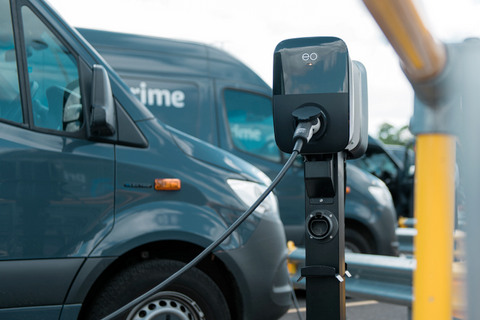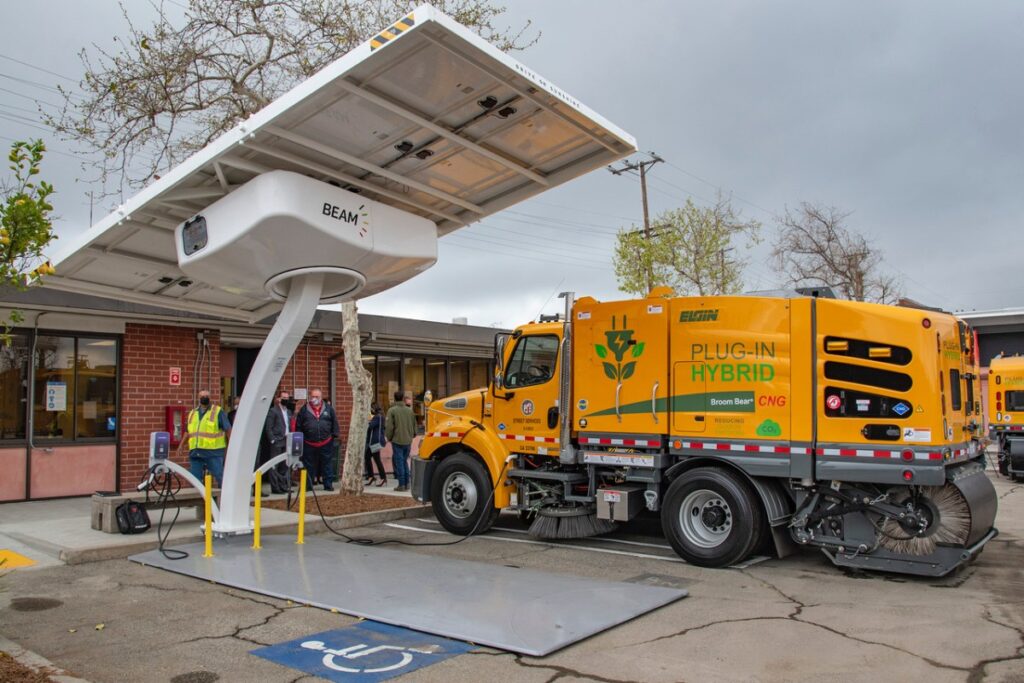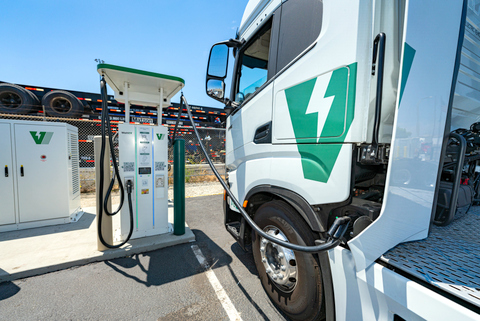EVs Are Here to Stay, But There’s Work to Do
EVs are here to stay, and funding opportunities for zero-emission fleets will drive exponential growth for these vehicles and their charging solutions in 2024.
In 2023, 14 million EVs[1] are expected to be sold worldwide across consumer, public sector and commercial markets. This represents a 35% year-on-year increase, even with concerns in many markets over the pace, quality and reliability of charging solutions. As charging infrastructure expands, longer-range vehicles will come onto the market. Coupled with conventional fuel prices, which remain high in many markets, switching to electric will remain a strategic decision for fleet operators across North America. As we look to 2024, EO Charging is eager to support this transition to electrified depots, particularly given the predictions below.
US EV Acceleration to Overtake Major Markets like Europe

According to the latest report by Ernst & Young[2], China still clearly leads the global race to electric mobility and early adopting European markets like Norway, Sweden and the Netherlands will no doubt continue to set the pace in 2024. However, the U.S. will be the market undergoing the most rapid EV transition.
A significant driver in this accelerated growth will be funding opportunities presented by the federal government, with major support growing across transit, school bus and other commercial fleets.
For example, the U.S. EPA Clean School Bus Program[3] has invested $5 billion to replace existing school buses with zero-emission and low-emission models from 2022 through 2026. With around 600,000 school and transit buses in the U.S., implementing a reliable charging infrastructure will be crucial to its deployment and success.
Low or No Emission Vehicle (Low No) [4] and the Bus and Bus Facilities Formula Program[5], both competitive grants through the Federal Transportation Administration, are predicted to provide roughly $1.7 billion toward electrifying public transportation across the United States.
The coming year will also present commercial fleets with the opportunity to electrify at a discount through Clean Commercial Vehicle Credits. Medium and heavy-duty vehicles may take advantage of tax credits up to $40,000, while credits of $7,500 may be awarded for smaller light-duty commercial vehicles.[6]
The U.S. is not electrifying alone. Canada is also funding electrification, with more than $2.75 billion available from 2021 through 2025 across transit and school bus sectors.[7]

Load Management Will Become a Necessity at Depots
Meeting the growing demand for EVs in 2024 means developing innovative solutions for load management. EV charger load management is critical to scale the adoption of electric vehicles without sacrificing the electricity grid’s reliability in many regions of the country. Load management solutions will help maximize the capacity of existing grid infrastructure by minimizing the necessity of interconnection upgrades at a given depot site. Load management also helps guard against sudden spikes in electricity demand that can overload the grid by rapidly reducing output in response to requests from grid operators.
In addition to being able to monetize this demand reduction directly, in some instances, depots leveraging load management solutions may also reduce their utility bill demand charges by charging outside of peak demand periods. Where time-of-use rates or other EV tariffs are in place, depots may shift charging to off-peak tariff periods, further shrinking the total cost of ownership of the fleet.
Innovation and Investment in Battery Storage Will Pick up Pace

Battery energy storage has become an increasingly important feature of the energy ecosystem for businesses with EV fleets, with many looking to support grids with flexibility services. According to a recent McKinsey report[8], the global battery energy storage system market is expected to reach between $120 billion and $150 billion by 2030, more than double its size today.
EO is actively engaging with more and more customers who are exploring how batteries might play a part in their energy supply and load management solutions, offering an alternative to conventional grid connections. We expect demand for battery storage elements to grow strongly over the coming year. Further, battery storage and other onsite energy generation technologies can support the abovementioned load management and participation in demand response programs by offering a tool by which the depot can decrease its reliance on the grid during peak demand.
An Open Ecosystem Will Become Ever More Important in 2024
Moving to EVs should be simple, reliable and accessible; this is why industry standards will become ever more necessary in the coming year.
The importance of industry standards like the Open Charge Point Protocol (OCPP) as an open-source communication standard for EV charging stations and network software companies demonstrates this. OCPP is designed to be a free, open-source and easy-to-implement communications standard that ensures all participants speak the same language. As a result, OCPP has become the global benchmark for interoperability throughout the EV charging industry. At EO, we believe open standards are now critical for effective and scalable infrastructure.
We’ve learned from other sectors that proprietary solutions don’t work and have already seen how the interoperability of different EV charging systems causes issues.
There’s a real complexity risk without standardizing protocols, device management, transaction handling, security and smart charging functionalities. The future of the EV industry lies in open-source collaboration.
In 2024, there will still be hurdles to overcome in fleet electrification, particularly as fleets begin to scale their effort beyond the pilot phase. However, with unprecedented levels of investment, we will see innovations readily available on the market. Both the public and private sector must work together to enable energy management, leverage creative onsite generation and other capacity solutions and advocate for agnostic chargers and charge management platforms that leverage industry standards. Together, we can make these components the future of fleet electrification.
Story by John Walsh, CCO Americas, EO Charging
[1] https://www.iea.org/reports/global-ev-outlook-2023/executive-summary
[2] https://www.ey.com/en_uk/news/2023/09/uk-among-worlds-top-5-markets-for-ev-readiness
[3] https://www.epa.gov/clean-school-bus-program-grants
[4] https://www.transit.dot.gov/lowno
[5] https://www.transit.dot.gov/funding/grants/busprogram
[6] https://www.irs.gov/credits-deductions/commercial-clean-vehicle-credit
[7] https://www.infrastructure.gc.ca/zero-emissions-trans-zero-emissions/index-eng.html
[8] https://www.mckinsey.com/industries/automotive-and-assembly/our-insights/enabling-renewable-energy-with-battery-energy-storage-systems

1 thought on “The Electrifying Opportunities for EVs in 2024 ”